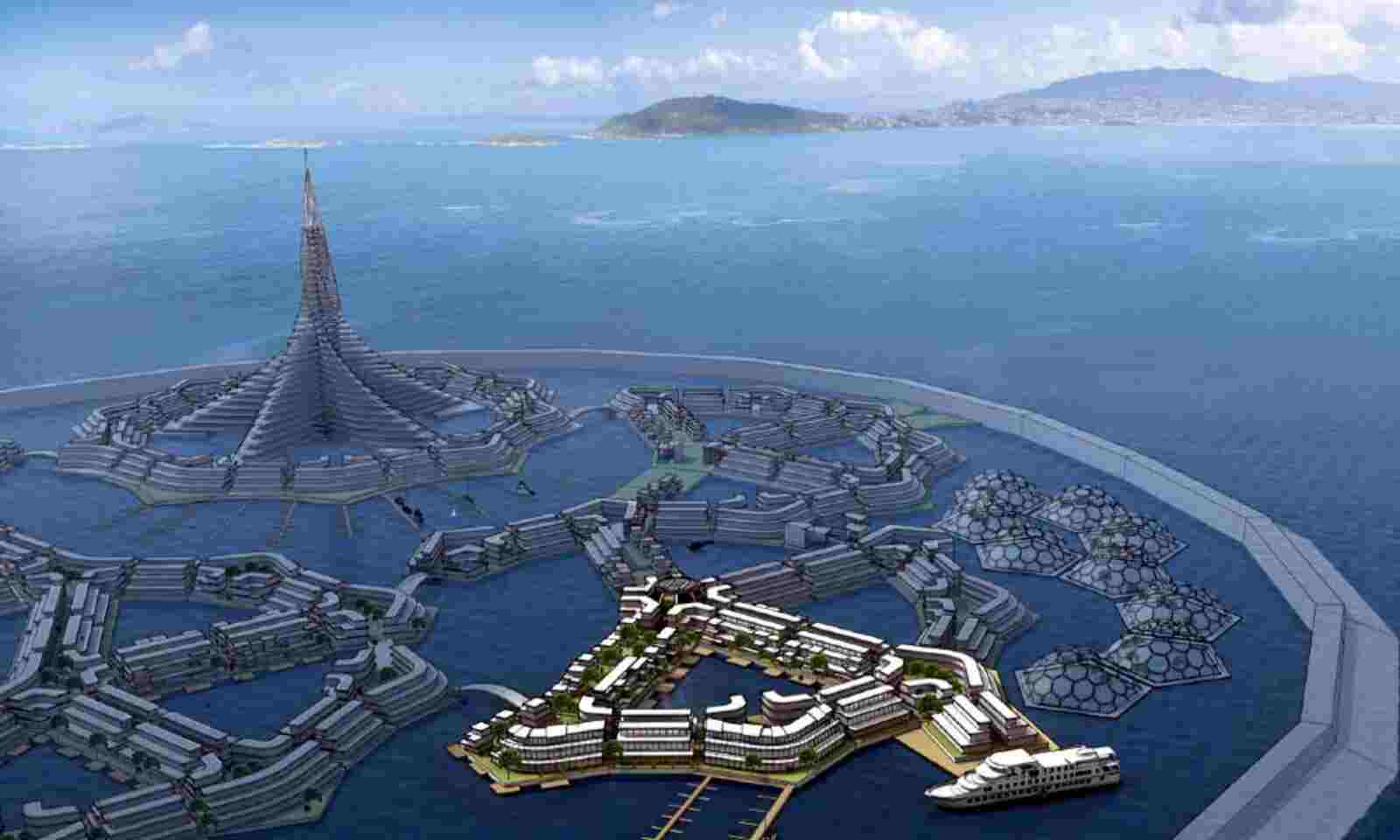Under the direction of Crown Prince Mohammed bin Salman, Saudi Arabia has sought to redefine its image and substantially transform its economy. The crown prince introduced a variety of social reforms several years ago as part of his ambitious Vision 2030 program intended to increase spending on entertainment and cultural infrastructure. The kingdom opened its first cinema in more than three decades in 2018 and expects to have upward of 100 cinemas across 25 cities by 2030.
These reforms and increased entertainment infrastructure spending are strategic moves to help Saudi Arabia alleviate its economic reliance on the oil and gas industry. Oil and gas revenue composed 64 percent of the government’s budget in 2016 but was down to 53 percent in 2020. Instead, Saudi Arabia is relying on several mega projects to boost hospitality and tourism revenue as well as attract global businesses.
In November 2021, Saudi Arabia announced its most ambitious project to date: Oxagon, an eight-sided floating industrial city on the Red Sea. The kingdom intends to leverage the Red Sea’s distinction as one of the busiest trade routes in the world to create an integrated port and supply chain network with futuristic and environmentally friendly manufacturing centers.
Floating?
While Oxagon is a promising development that, if delivered as promised, could dramatically transform the kingdom in a variety of ways, some skeptics question why it has to be a floating city and if the plan is at all feasible. Vishal Wanchoo, CEO of Oxagon, explained the reasoning behind the decision in a November 2021 interview with Arabian Business:
“By creating a floating city we limit coastal sprawl while creating waterfront communities that can be efficiently cooled and controlled using the ocean’s natural moderating effects,” said Wanchoo. “And by moving research and technology offshore, Neom [the larger city in which Oxagon will be situated] will leverage the power of the Red Sea to drive innovation in ocean exploration, marine transportation, food production, and tourism.”
Wanchoo also explained that the uniqueness of the floating city is another element that will help attract global businesses and entrepreneurs focused on blue/green economies. He notes that Oxagon will be a hub for biotech development and sustainable seafood production. Neither Wanchoo nor any other Saudi officials have explained how the city would float or how much the project will cost.
Transformative Manufacturing Center
Approximately 10 percent of global trade passes through the Red Sea each year. Oxagon will expedite and create more efficient processes for shipping and distribution via the world’s first next-gen automated port and fully integrated logistics center. Beyond that, it is expected to be among the world’s premier manufacturing hubs with an emphasis on next-gen technology innovation in sectors like space, robotics, smart and cognitive cities, and advanced buildings.
Wanchoo further explained that the floating city’s regulatory structure will be conducive to innovation and economic growth, while entrepreneurs will have access to end-to-end investor care from experienced investors as well as leadership support from qualified business advisors. Already, Oxagon has secured a commitment from Gulf Modular International to construct the world’s largest modular building construction factory. In addition, Neom is teaming with ACWA Power and Air Products to develop the world’s most expansive green hydrogen project. Desert Technologies and Hyzon Motors have also committed to development projects in Oxagon.
Oxagon manufacturing facilities will cover the following seven priority clusters:
- Technology and digital
- Autonomous and sustainable mobility
- Modern construction
- Sustainable food production
- Health and wellbeing
- Water innovation
- Renewable energy
It will be powered completely by clean energy and be the world’s first industrial city to emphasize exceptional quality of living for its citizens. Wanchoo expects residents to begin moving into the city by 2023. He added onshore development should be finished by 2030.
Part of the Neom Mega Project
Oxagon is just one component of the Neom mega project. The entire development will include the Neom Smart City and The Line, which will involve a multitude of linear and connected cities built around nature with an emphasis on walkability. There will be no roads or cars in cities along The Line; instead, all essential services will be within a five-minute walk from select residences. The Line is expected to add $48 billion to Saudi Arabia’s domestic GDP and create 380,000 jobs by 2030.
The overall Neom project, which includes the Neom Smart City, The Line, and Oxagon, will be more than 30 times the size of New York City once complete.
One of Many Ambitious Projects in Saudi Arabia
Neom may be one of the more ambitious projects associated with Crown Prince Mohammed bin Salman’s Vision 2030, but it is far from the only ongoing grandiose development in the kingdom. In fact, Neom is one of six projects in Saudi Arabia’s $7 trillion development plan. The other five are the nine-island Red Sea Project tourism venture; the $8 billion Qiddiya entertainment city; the 3,300-square-kilometer Amaala luxury tourism project; the $13 billion Aseer Development Project; and the $50 billion Diriyah Gate Development.

